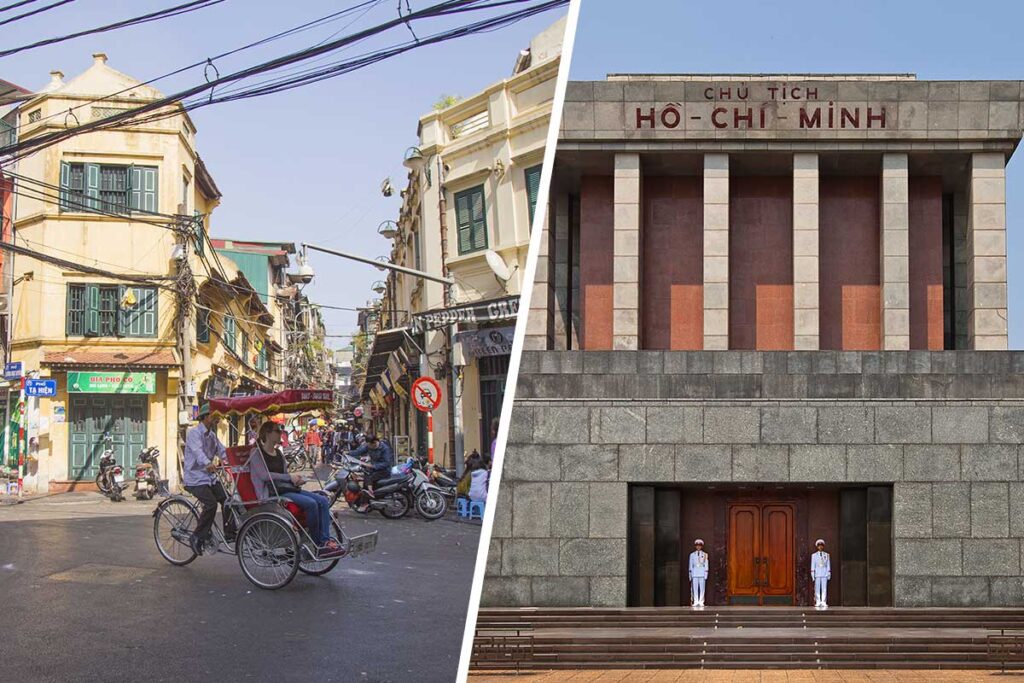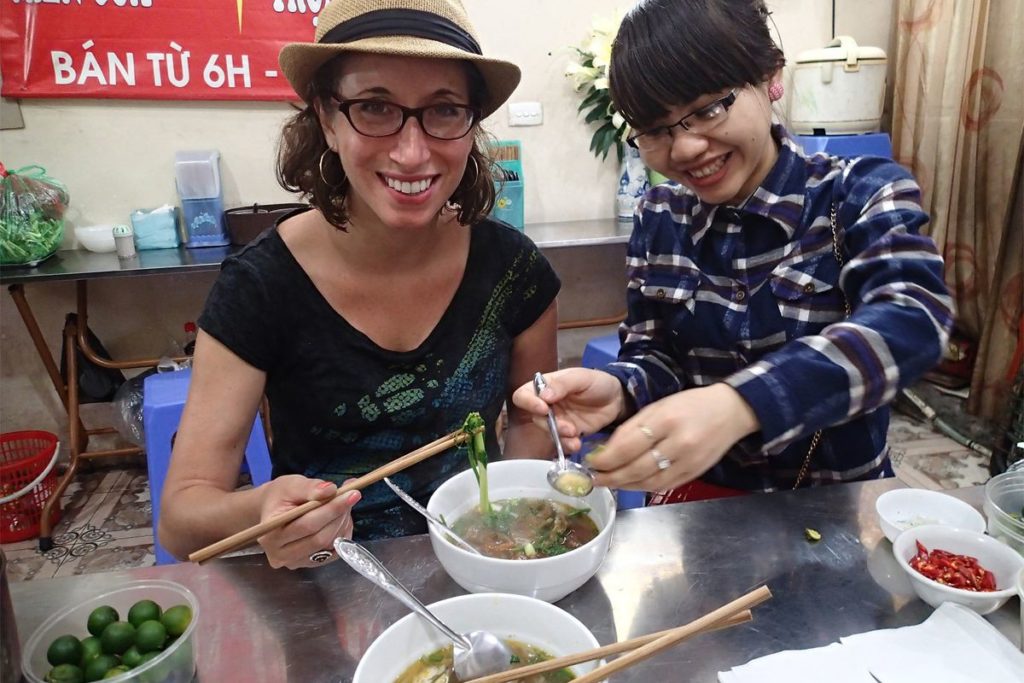Is two days in Hanoi enough?
Two days is enough to see many of Hanoi’s major highlights — and gives you a well-rounded first impression of the city. You’ll have time for chaotic markets, peaceful pagodas, key historical sites, and plenty of street food in between. For most travelers visiting multiple destinations in Vietnam, two days is a good amount to focus on the essentials.
That said, Hanoi is a large and layered city, and there’s always more to discover. If you’re interested in lesser-known sights, local neighborhoods, or want to take things at a slower pace, adding more time can make your experience deeper and less rushed. But as a short cultural stop, two days strikes a good balance between depth and practicality.
What to focus on during a 2-Day Hanoi Visit
With two days in Hanoi, the key is to focus each day on a different area of the city. This keeps things efficient, walkable, and varied — while still giving you a real sense of Hanoi’s culture and atmosphere.
First-time visitors
A simple and effective plan is to divide your time between Hanoi’s two most important districts.
Spend Day 1 exploring the Old Quarter and French Quarter in Hoan Kiem District, where narrow alleys, colonial buildings, temples, cafés, and markets all collide in walkable chaos.
On Day 2, head to the more spacious and formal Ba Dinh District, home to Hanoi’s most important historical sites, museums, and government landmarks.
This mix gives you a balance of energy and calm, street life and structured history — without needing to crisscross the city.
Repeat visitors
If you’ve already covered one of those districts on a past trip, you can easily switch it out.
Many second-time visitors swap in a day around West Lake, known for its quiet temples, lakeside cafés, and expat-friendly vibe. Or you can build a themed itinerary around topics like religion, architecture, or war history, focusing on specific museums and monuments in more detail.
You could also take a short day trip to nearby villages or provinces if you want something rural or craft-focused.
Tip: Check out our Hanoi 3-Day Itinerary to pick a day that fits your interests — perfect if you’ve already seen one part of the city.
Where to stay for 2 Days in Hanoi
For a short stay like this, location matters more than luxury. The best place to stay is the Old Quarter, where you’ll be right in the heart of the action — surrounded by street food, shops, walking routes, and many of the city’s main highlights. It’s busy, but that’s part of the experience.
If you prefer something quieter and more polished, the French Quarter is a good alternative. It has wider streets, colonial architecture, and easier access to sights like the Hoa Lo Prison Museum, the Opera House, and several mid-range and upscale hotels.
For second-time visitors or those wanting a more residential feel, the West Lake area offers a slower pace, with lakeside cafés, international restaurants, and fewer crowds — though you’ll need a short ride to reach most sights.
With two nights in Hanoi, there’s no need to change hotels — just choose a central area and make the most of your time on foot.
Hanoi in 2 Days – Full itinerary with highlights
Hanoi in 2 Days gives you enough time to explore two very different sides of the city — the buzzing old streets of Hoan Kiem and the grand monuments of Ba Dinh. This itinerary keeps the days walkable and well-paced, combining iconic sights, local food, and cultural depth without trying to cram in too much.
Day 1: Old Quarter and French Quarter
1. Sunrise at Long Bien Bridge (optional)

If you’re up early, start your day with a quiet walk across Long Bien Bridge, one of Hanoi’s most atmospheric photo spots. Built by the French in the late 1800s, it still carries trains, scooters, and pedestrians across the Red River — and offers sweeping views of small farms and market boats below.
In the early morning light, the city feels calm and timeless. Locals cross the bridge with baskets of vegetables, and the whole scene gives you a different perspective on Hanoi before the streets get crowded.
Tip: You can walk directly from here to Dong Xuan Market to catch the morning buzz.
2. Dong Xuan Market – Morning Local Life
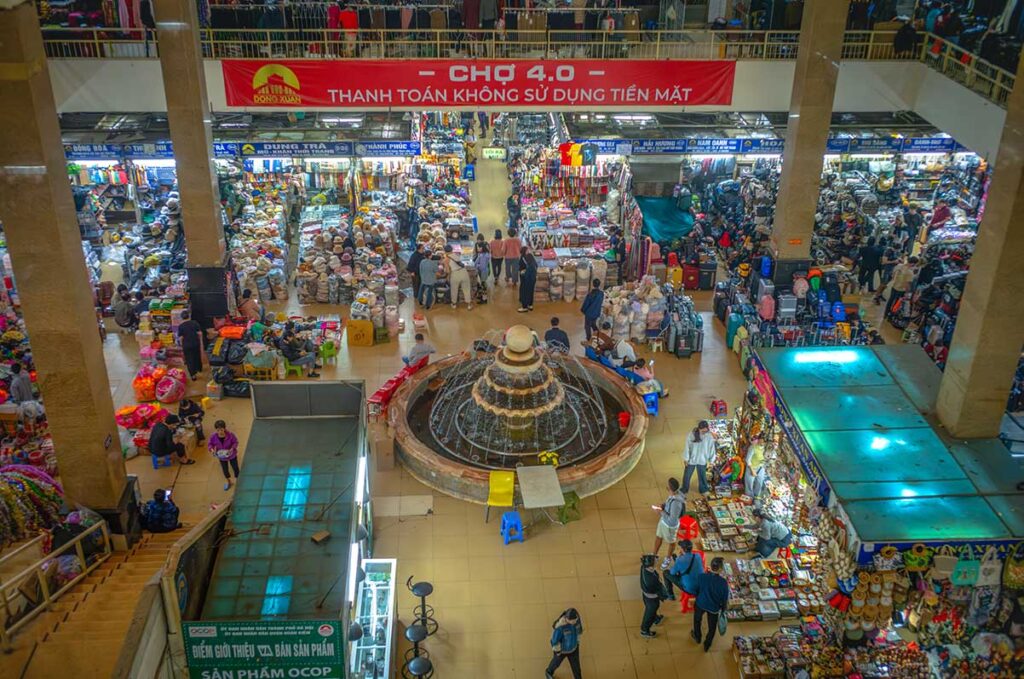
Just a 10-minute walk from the bridge, Dong Xuan Market is where you’ll see Hanoi at its most local. While the building itself sells everything from fabrics to dried squid, the real charm is in the surrounding streets and alleys — packed with early-morning vendors, loud bargaining, and endless movement.
This is not a curated tourist market, and that’s exactly the appeal. It’s one of the best places to watch Hanoi wake up — especially if you’re into street photography or just want to absorb real daily life.
3. Pho Breakfast at a Local Eatery
After the market, stop for a hot bowl of pho — Vietnam’s breakfast staple and Hanoi’s signature dish. Whether you choose pho bo (beef) or pho ga (chicken), there’s no better way to start the day.
Good options include local favorites like Pho Gia Truyen (49 Bat Dan) or Pho 10 Ly Quoc Su. But if you see a busy corner place full of locals, trust it.
Expect fast service, plastic stools, and broth that’s been simmering for hours — cheap, filling, and full of flavor.
4. Walking the Old Quarter – Alleys, Chaos, and Culture
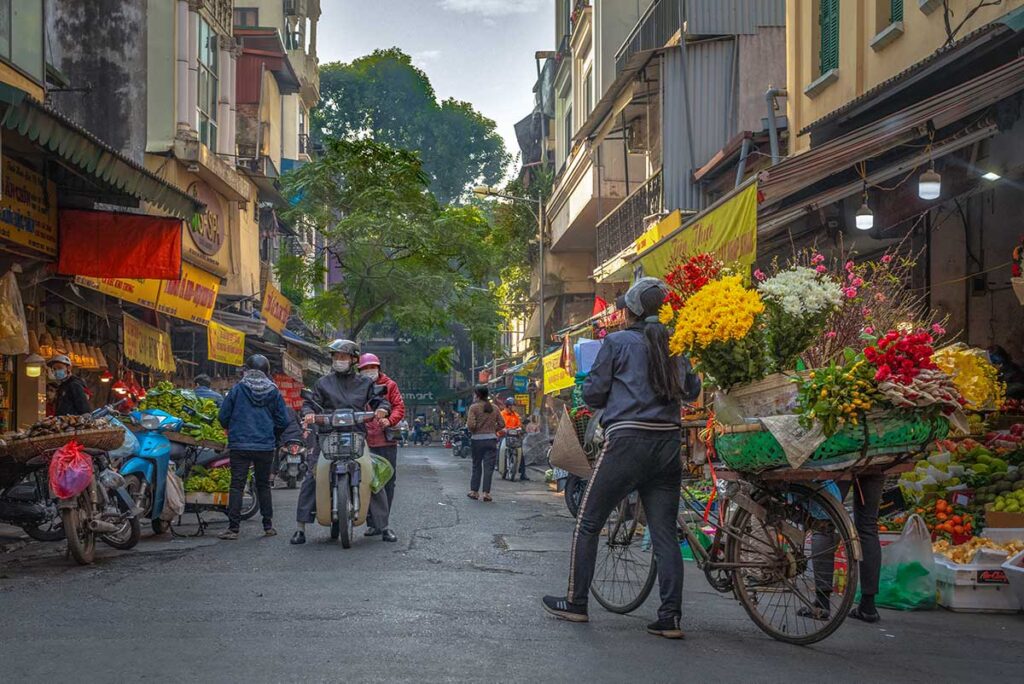
After breakfast, spend the morning exploring the Old Quarter, Hanoi’s most iconic neighborhood. It’s noisy, crowded, and full of character — with tangled alleys, shopfronts spilling onto sidewalks, and centuries of history layered into each block.
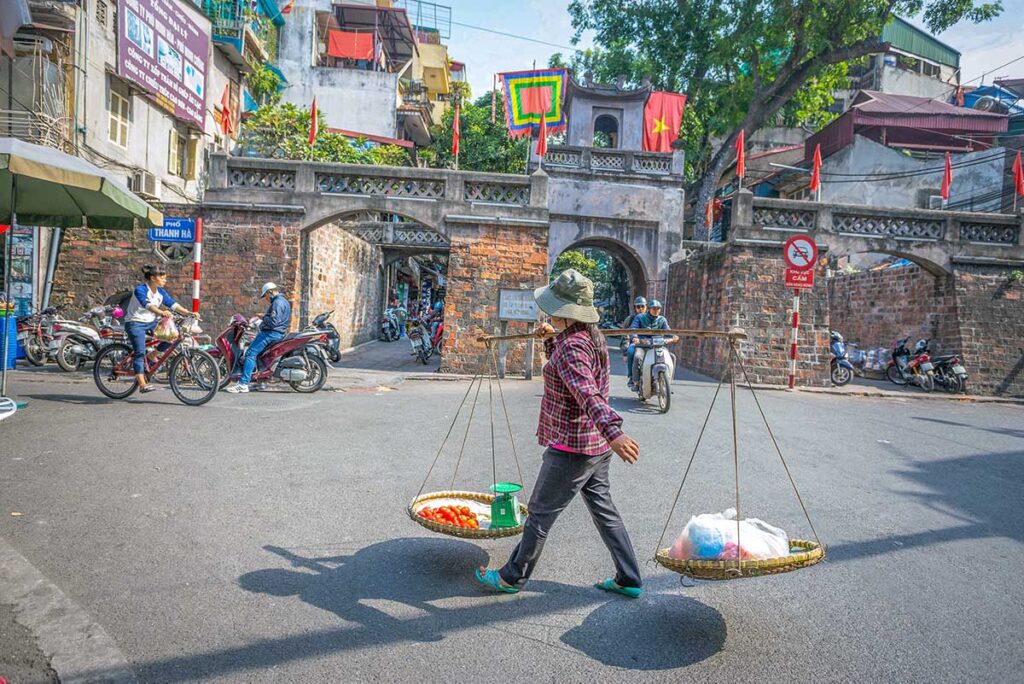
A few cultural stops to include along the way:
– Hanoi Old City Gate – the last surviving gate from the ancient walls
– 87 Ma May Heritage House – a restored tube house showing how families lived
– Bach Ma Temple – one of the oldest temples in Hanoi
Even without a set route, walking the Old Quarter is an experience on its own. If you want more context or access to hidden spots, consider booking a short guided walk.
5. Hoan Kiem Lake + Ngoc Son Temple
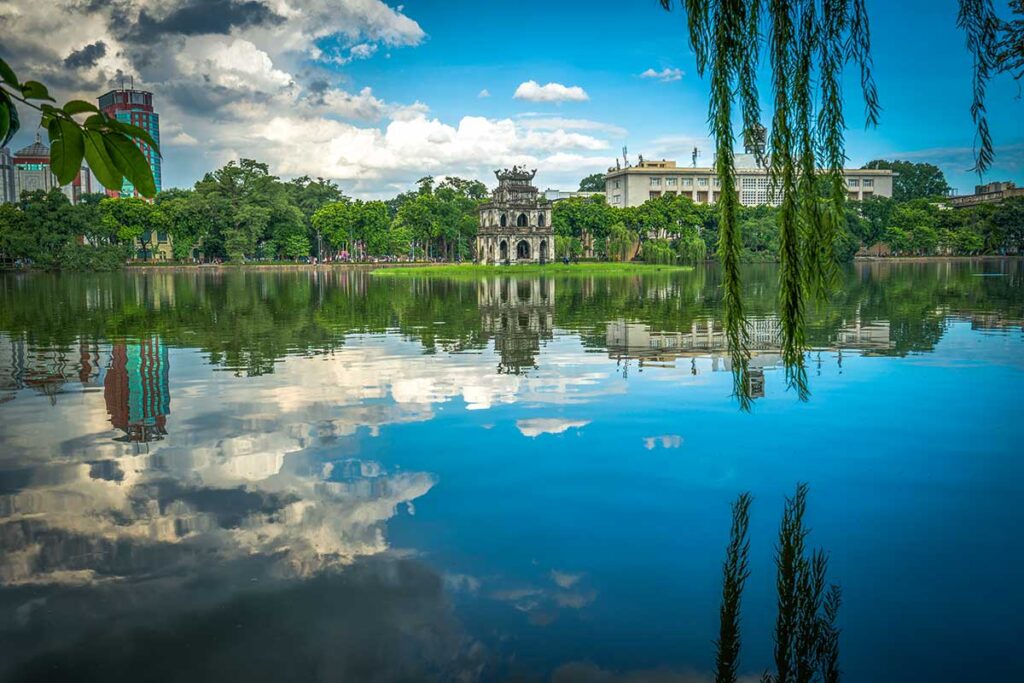
From the Old Quarter, head south to Hoan Kiem Lake, the city’s most central and symbolic landmark. Locals come here to walk, relax, and meet friends — and it’s a great place to slow the pace and take in the atmosphere.
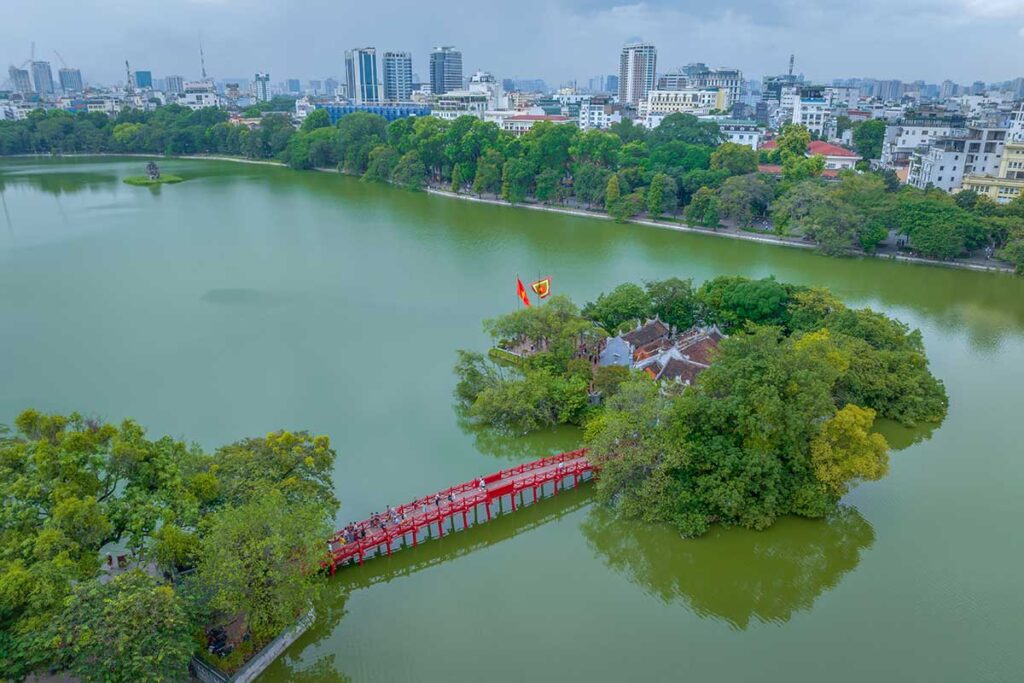
Cross the bright red Huc Bridge to reach Ngoc Son Temple, located on a small island in the lake. Inside, you’ll find altars, a preserved giant turtle, and views back toward the city. It’s small, but worth a stop.
Entrance: 30,000 VND (~$1.20 USD)
Time: 30–45 minutes for temple + full lake walk
6. St. Joseph’s Cathedral + Lemon Tea Stop
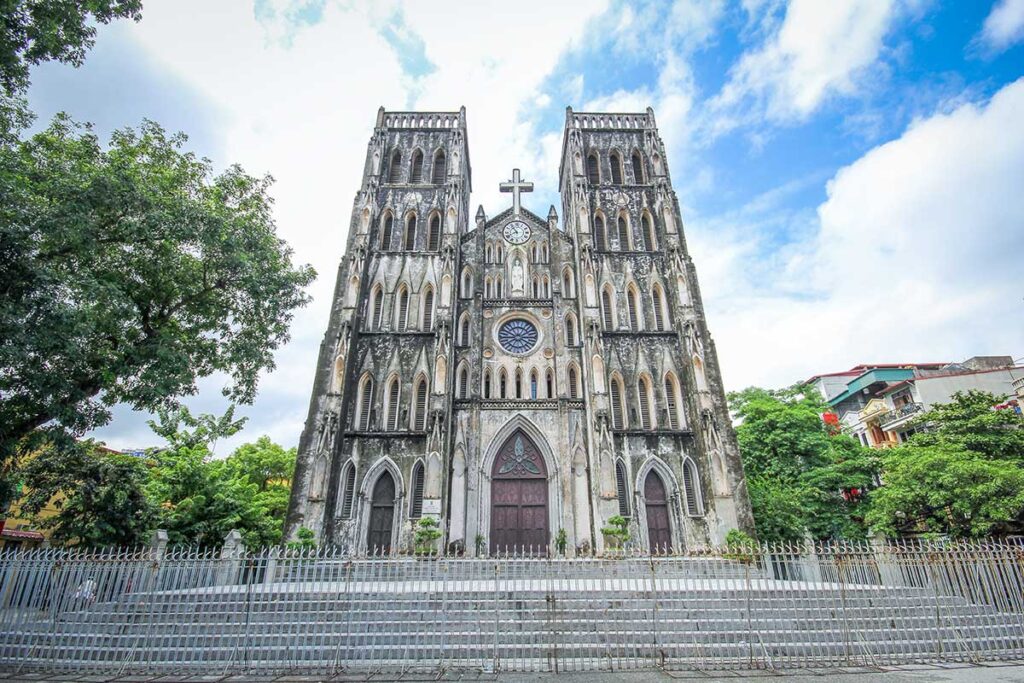
Just a few blocks west of the lake, St. Joseph’s Cathedral stands tall with its neo-Gothic towers and weathered façade. Built in 1886, it’s one of Hanoi’s most recognizable churches and feels like a piece of Europe dropped into the middle of the city.
The area around the cathedral is known for its street cafés. Grab a glass of lemon tea (tra chanh) and sit on a low plastic stool — it’s a popular local ritual, especially in the late morning or early evening.
7. Hoa Lo Prison Museum
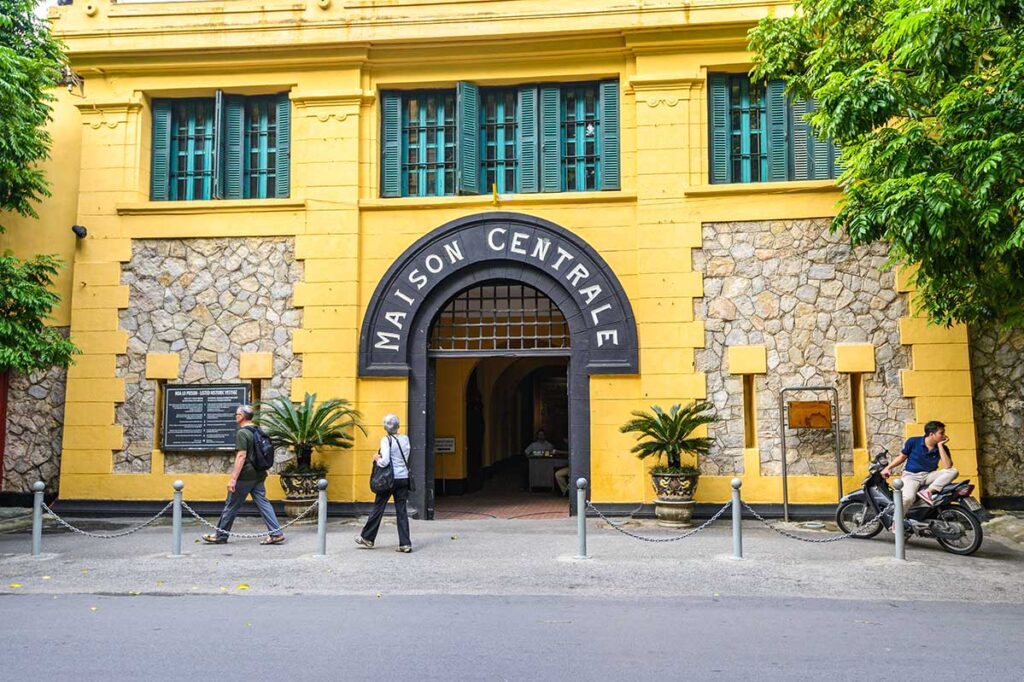
A visit to the Hoa Lo Prison Museum adds depth and context to your Hanoi experience. Originally used by the French to imprison Vietnamese revolutionaries, and later by North Vietnam to hold American POWs, this site captures the country’s layered and painful 20th-century history.
It’s gritty, emotional, and political — not sugar-coated. Expect tight cells, old shackles, and dramatic storytelling. Allow 45–60 minutes.
Entrance: 30,000 VND (~$1.25 USD)
This is one of the most meaningful stops in your Hanoi in 2 Days itinerary — and worth visiting even if you’ve seen other war-related museums in Vietnam.
8. Afternoon/Evening Street Food Tour
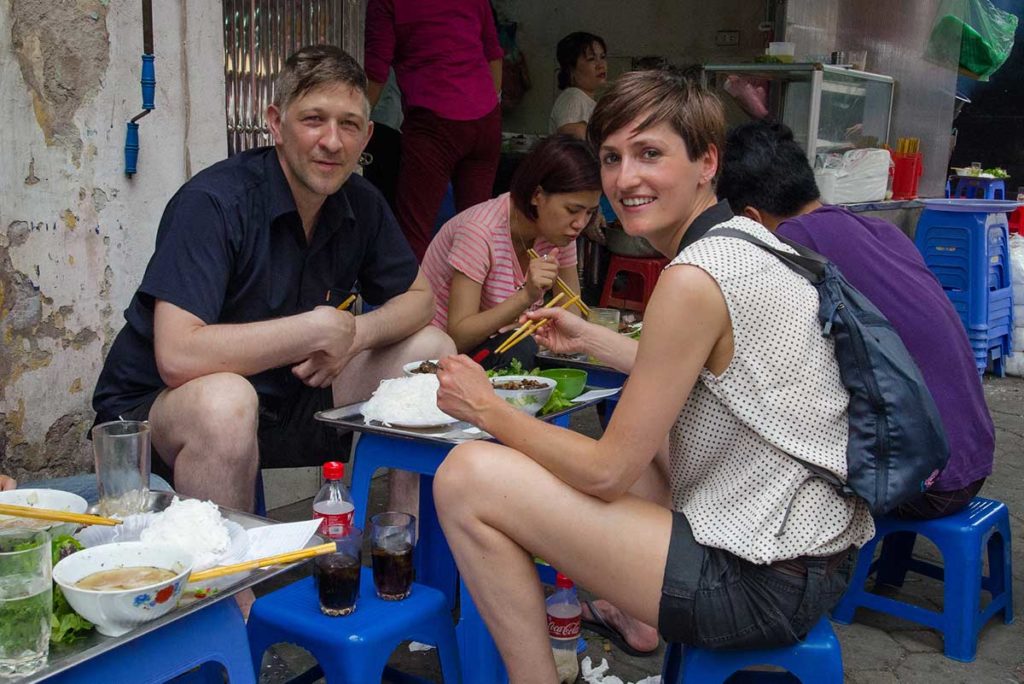
For your evening, join a guided street food tour — one of the best ways to explore the Old Quarter after dark. You’ll be taken down alleys, into family-run shops, and to dishes you might not discover on your own. Think bun cha, banh cuon, egg coffee, and maybe even a surprise dessert.
Hanoi Street Food Tour
- Experience Try local dishes with a guide who knows hidden food spots and cultural stories.
- Includes Street snacks, traditional meals, and insights you’d miss exploring on your own.
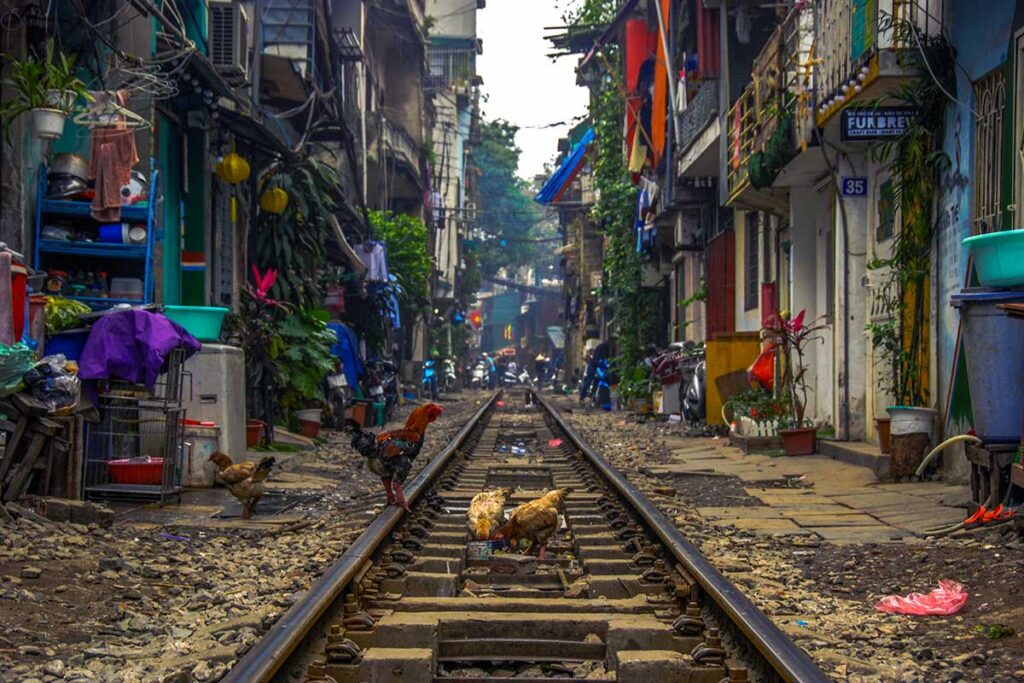
Most tours also include a visit to Train Street, where you can watch the train pass just meters from tiny cafés — timed perfectly for dusk. This is a must-do if you’re trying to combine culture, food, and local life into your 2-day Hanoi visit.
9/ Bia Hoi Corner or Local Beer Stop
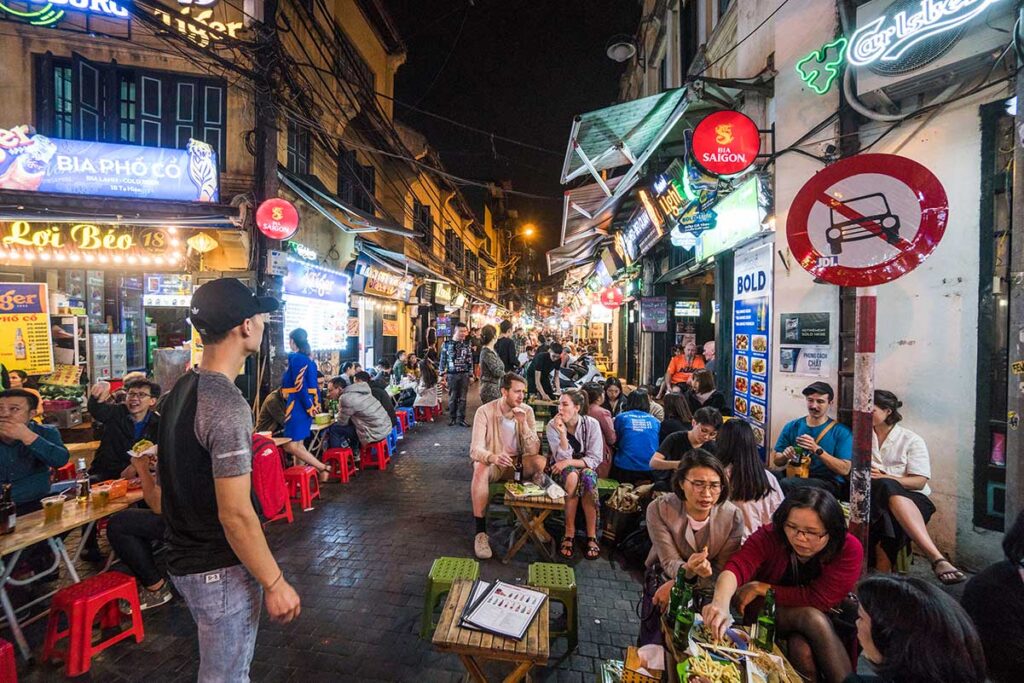
Cap off your first day with a cold glass of bia hoi, Hanoi’s famously light draft beer. The most iconic spot is Bia Hoi Corner, where hundreds of people sit on plastic stools, packed into the intersection of Ta Hien and Luong Ngoc Quyen Streets.
It’s loud, lively, and perfect for people-watching. If you prefer something quieter, swap it for a rooftop bar with city views and stronger cocktails. Either way, there’s no better way to end your first evening in Hanoi in 2 Days.
Day 2: Ba Dinh District & West Lake Extension
Your second day focuses on Ba Dinh District, the political and historical center of Hanoi. It’s where you’ll find broad ceremonial spaces, war history, and key national monuments — balanced with peaceful pagodas and lakeside views later in the day. This route complements the energy of the Old Quarter and adds depth to your Hanoi in 2 Days itinerary.
1. Temple of Literature
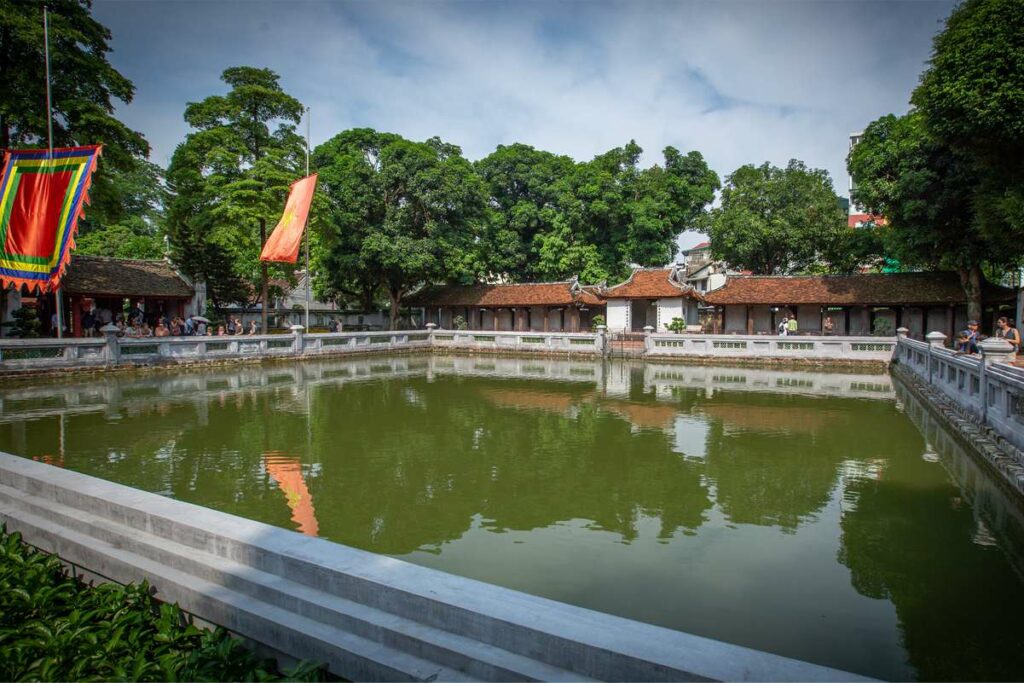
Start the day at the Temple of Literature, Vietnam’s first national university, founded in 1070. Dedicated to Confucius, it’s a quiet, scholarly complex with landscaped courtyards, turtle steles, and a calm energy that contrasts with Hanoi’s usual street noise.
It’s one of the most atmospheric places in the city — ideal for a slow walk and photos in the soft morning light.
Entrance: 30,000 VND (~$1.25 USD)
Time: Around 45 minutes to 1 hour
2. Lenin Park
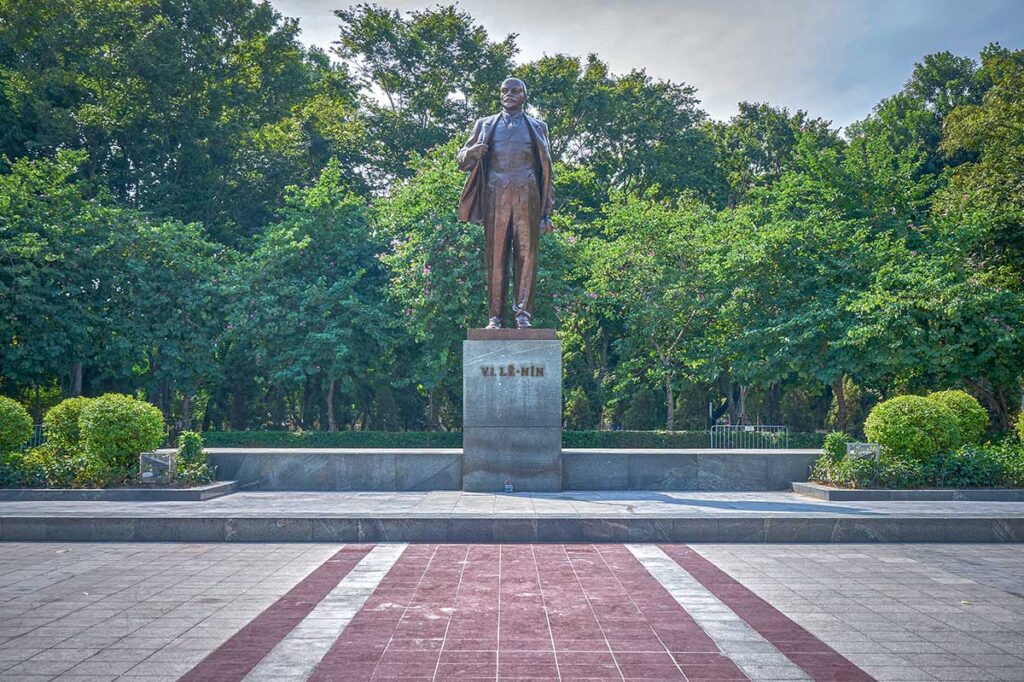
This small park sits right next to the Hanoi Flag Tower, along the walking route from the Temple of Literature to the Imperial Citadel. It’s not a major attraction, but it often has locals doing morning exercises, playing badminton, or relaxing on benches.
The park isn’t large or scenic, but it adds a quick glimpse of everyday life in Ba Dinh District — and since it’s directly on your route, it’s worth a short pause.
3. Hanoi Flag Tower
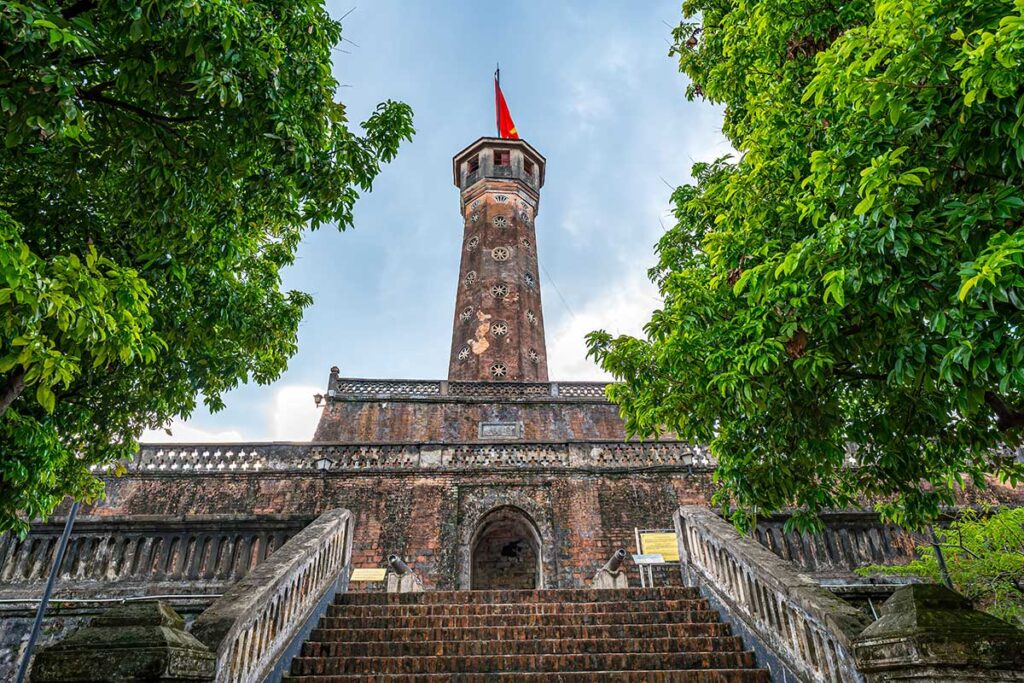
Next to the Vietnam Military History Museum, the Hanoi Flag Tower is a sturdy brick structure topped by a massive national flag. It’s one of the few old citadel structures that survived the colonial period and is now an iconic photo stop.
You can climb part of the tower for a small fee, but even from below, it’s a nice visual landmark — especially if you’re heading into the Imperial Citadel complex next.
4. Imperial Citadel of Thang Long
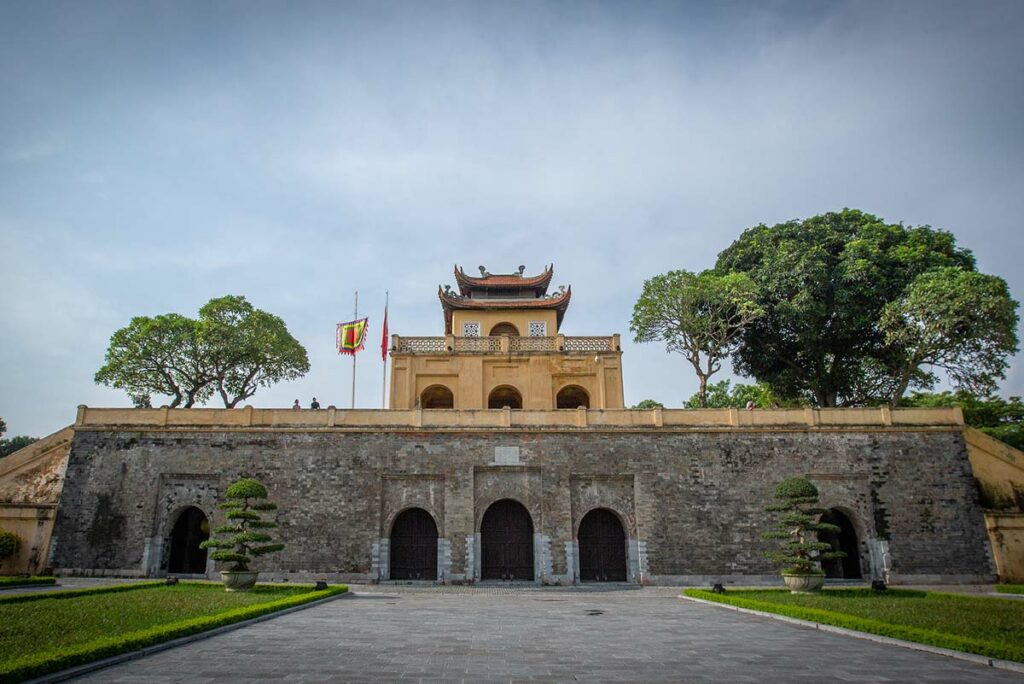
A UNESCO World Heritage Site, the Imperial Citadel of Thang Long was the seat of power for centuries of Vietnamese dynasties. Today, it’s a mix of ancient foundations, restored gates, and Cold War-era bunkers once used by Ho Chi Minh and his generals.
You can explore the site independently or join a short guided tour to understand the historical layers — from royal court to military command center.
Entrance: 30,000 VND
Time: 1–1.5 hours
5. Ba Dinh Square
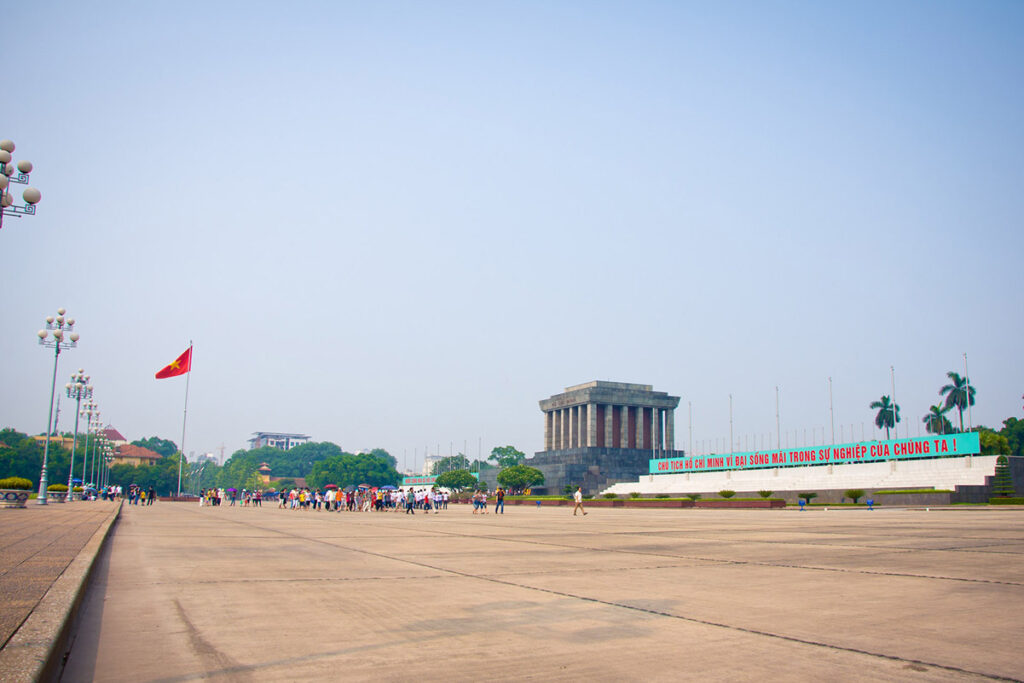
Just a few minutes away lies Ba Dinh Square, the symbolic heart of modern Vietnam. This is where President Ho Chi Minh read the Declaration of Independence in 1945, and where official parades and state ceremonies still take place today.
The square is wide, orderly, and quiet — a sharp contrast to the Old Quarter’s sensory overload. It’s best visited before the mausoleum, since they’re directly connected, and the open space gives you a moment to pause between sights.
6. Ho Chi Minh’s Mausoleum
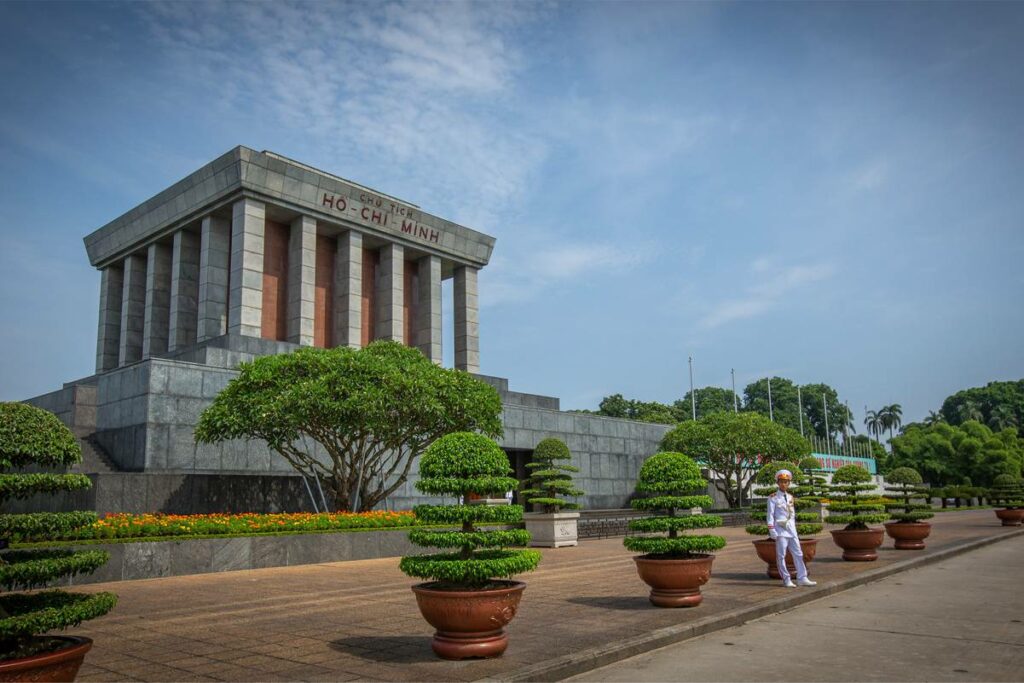
If you want to go inside the Ho Chi Minh Mausoleum, plan your visit for the morning — it’s only open for a few hours each day, and lines can be long, especially on weekends or holidays. Inside, you’ll briefly pass by the preserved body of Ho Chi Minh, lying in a glass case, guarded by solemn white-uniformed soldiers.
There’s a strict dress code: no shorts, sleeveless tops, or hats, and photography is strictly prohibited.
If you prefer, you can skip the queue and simply view the building from Ba Dinh Square — impressive enough from the outside.
7. Ho Chi Minh Museum
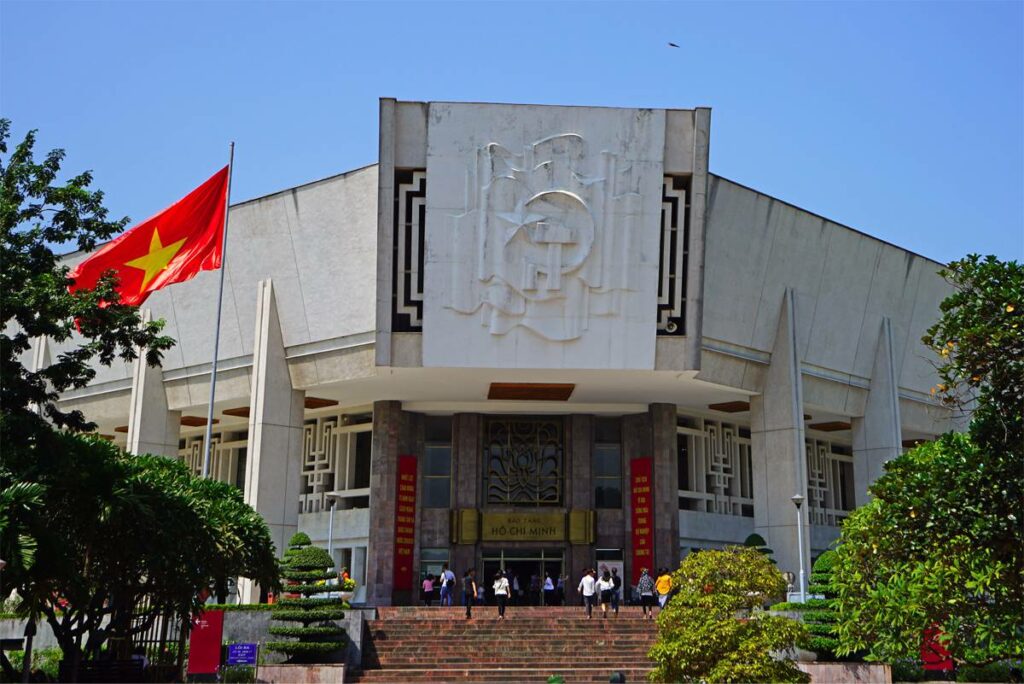
Next door, the Ho Chi Minh Museum offers an unusual mix of biography, propaganda, and abstract symbolism. Some exhibits are traditional — artifacts, letters, photographs — while others use dramatic installations to express Ho Chi Minh’s ideals and revolutionary life.
Travelers tend to either love or skip this museum, but it plays a big part in understanding how modern Vietnam views its founding leader.
Allow around 45 minutes if you’re curious and already nearby.
8. One Pillar Pagoda
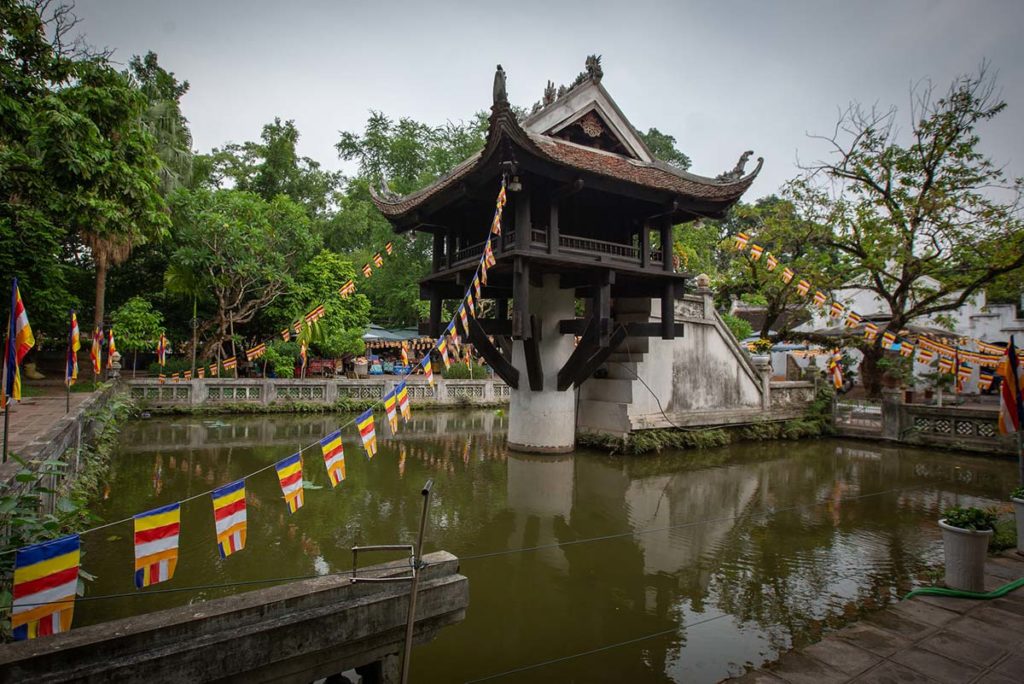
Just behind the museum grounds sits the One Pillar Pagoda, a small but iconic wooden temple perched on a single stone column over a lotus pond. The design symbolizes purity and enlightenment and was originally built in the 11th century (though reconstructed many times since).
It’s a quick stop, often busy with both tourists and locals, but still worth seeing while you’re in the complex.
9. Ho Chi Minh’s Stilt House & Presidential Palace
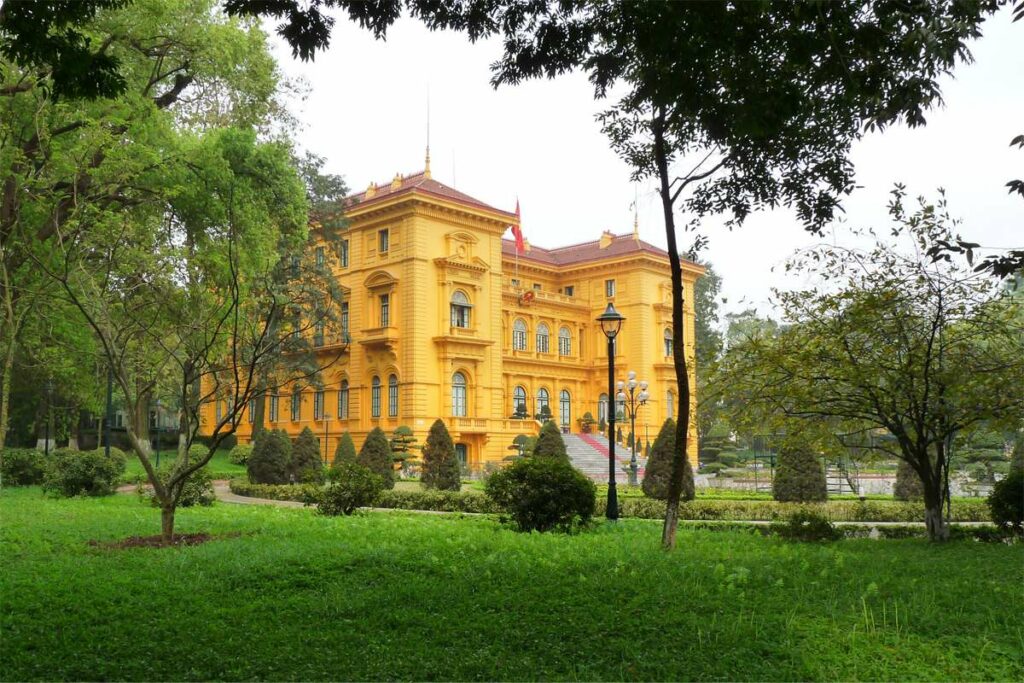
Tucked away in a leafy corner of the same complex, Ho Chi Minh’s Stilt House shows the modest lifestyle he chose over the grandeur of the nearby Presidential Palace.
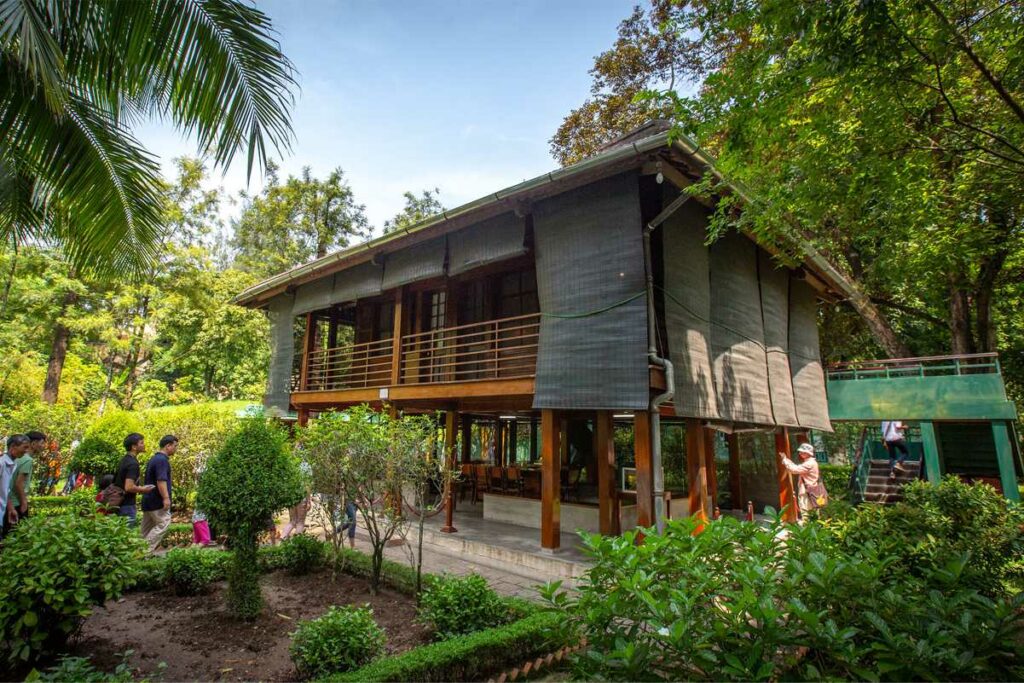
The house overlooks a small pond and garden, with simple furnishings and a quiet, respectful atmosphere.
This peaceful site rounds out the political side of your Hanoi in 2 Days experience with something more personal and reflective.
10. Quan Thanh Temple
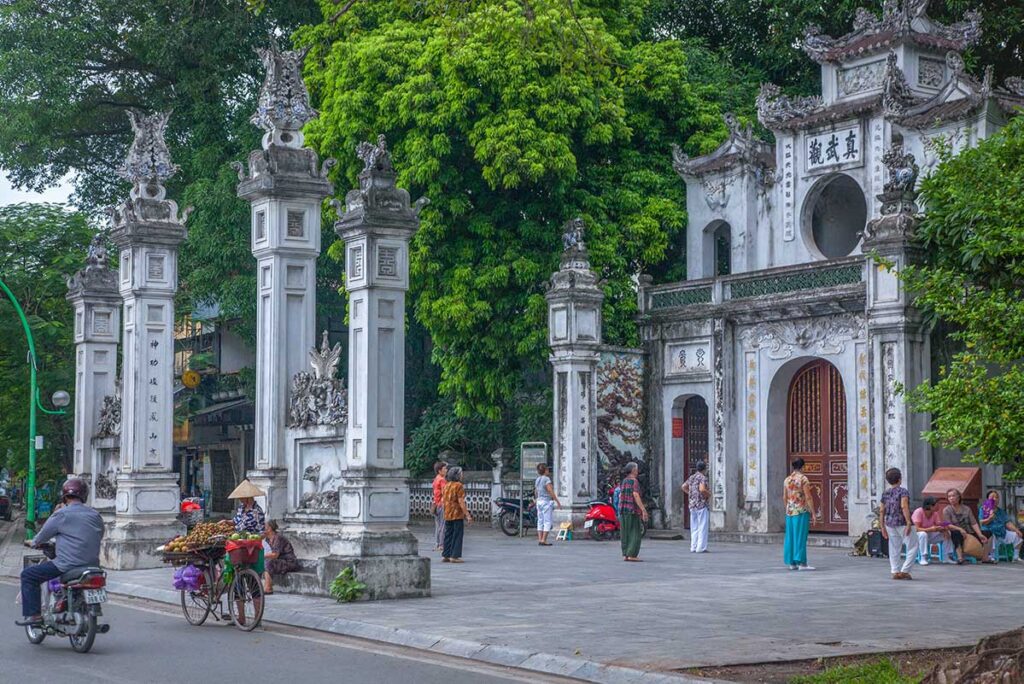
From here, head toward West Lake, stopping first at Quan Thanh Temple — one of Hanoi’s four ancient guardian temples, dedicated to the Taoist deity Tran Vu.
It’s less crowded than other temples, with a dark wooden interior, incense-filled air, and a giant bronze statue that has watched over the city for centuries.
It’s a good transition point between Ba Dinh’s historical landmarks and the lakeside scenery ahead.
11. Tran Quoc Pagoda
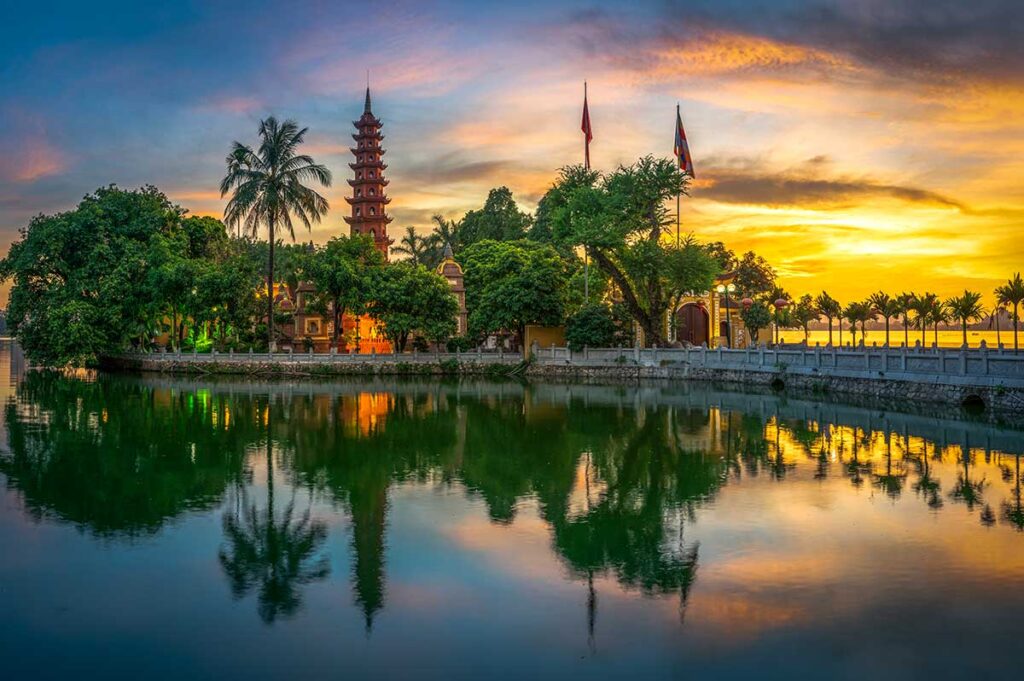
Set on a small peninsula reaching into West Lake, Tran Quoc Pagoda is the oldest pagoda in Hanoi, originally built in the 6th century. Its red tower reflects beautifully in the water, especially in the late afternoon when the light softens.
This is a peaceful and photogenic stop, popular with both locals and travelers. The setting feels calm, and it’s a great moment to slow down before sunset.
12. West Lake
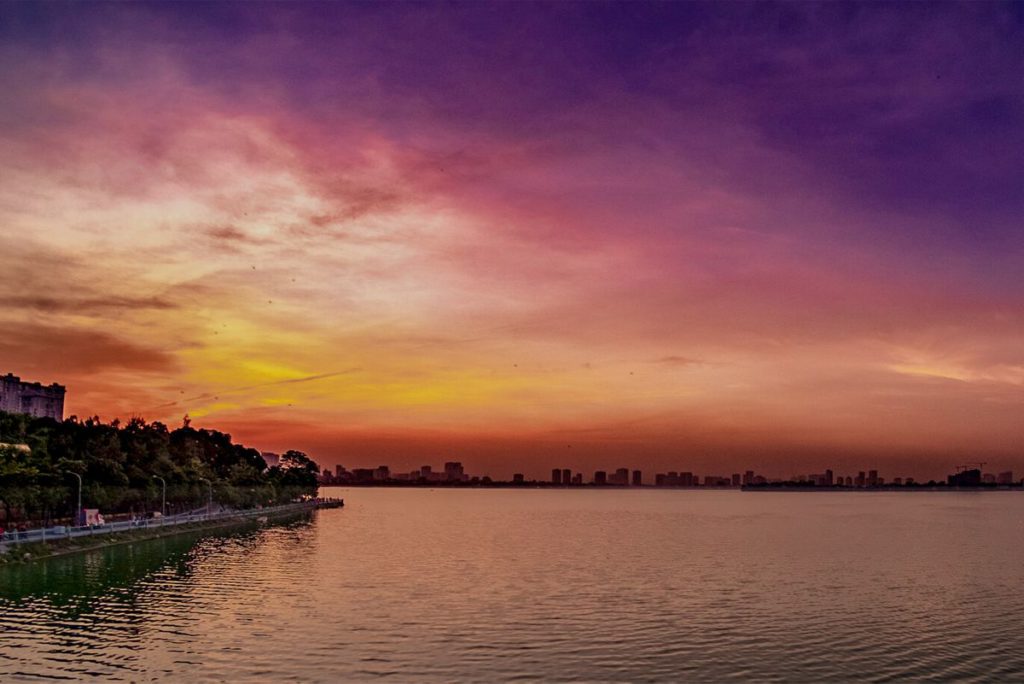
If time and energy allow, continue around West Lake — Hanoi’s largest body of water. You’ll find lakeside cafés, quiet neighborhoods, and views that open up the city after a day of enclosed historical sites.
At sunset, the atmosphere becomes especially relaxed. If you want something more active, rent a bike or hire a cyclo ride to loop part of the lake. It’s not essential for your Hanoi in 2 Days itinerary, but it’s a great bonus if you enjoy slow travel or want to see a more local side of the city.
13. Back to Old Quarter for Water Puppet Show
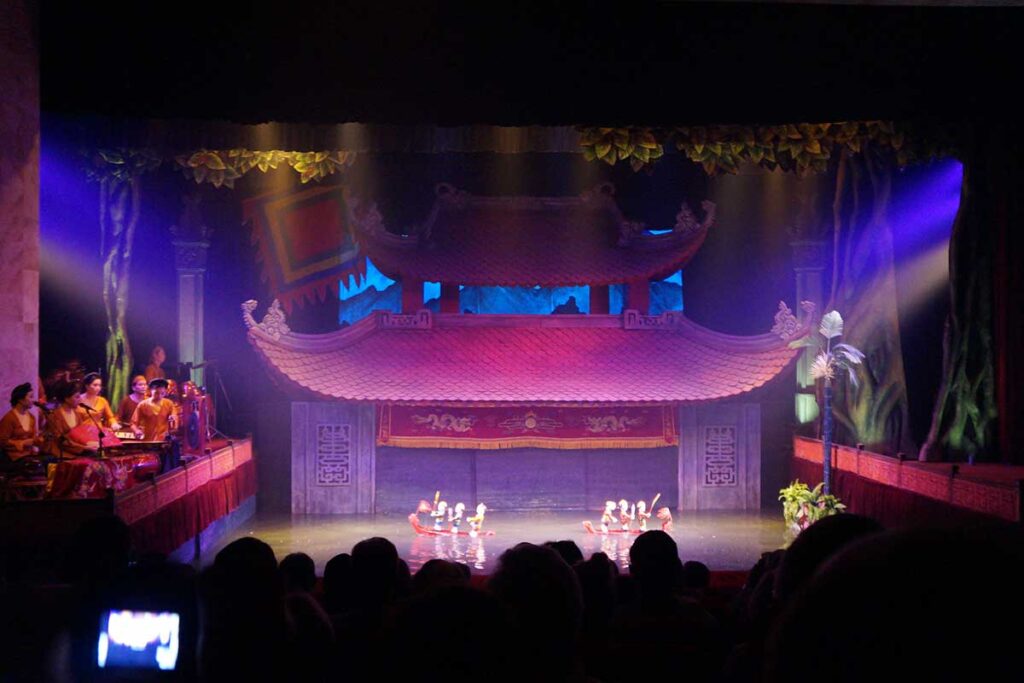
End your second day with a classic cultural performance at the Thang Long Water Puppet Theatre, located just by Hoan Kiem Lake.
The evening shows blend traditional music, folklore, and puppetry over water — a uniquely Northern Vietnamese art form that’s accessible and entertaining, even without understanding the language.
It’s walkable from both West Lake (with a short ride) or directly from the Old Quarter.
Tip: Book tickets in advance, especially in high season or on weekends.
Quick overview – 2-Day Hanoi itinerary by time
Here’s a simplified breakdown of your Hanoi in 2 Days itinerary, split by day and time:
Day 1 – Old Quarter & French Quarter
| Time | Activity |
|---|---|
| 6:00 AM | (Optional) Sunrise at Long Bien Bridge |
| 7:00 AM | Dong Xuan Market – morning local life |
| 8:00 AM | Pho breakfast at a local eatery |
| 9:00 AM | Walk the Old Quarter – streets, temples, houses |
| 10:30 AM | Hoan Kiem Lake + Ngoc Son Temple |
| 11:30 AM | St. Joseph’s Cathedral + lemon tea |
| 12:30 PM | Quick lunch or rest |
| 1:30 PM | Hoa Lo Prison Museum |
| 4:30 PM | Join street food tour (includes Train Street) |
| 7:30 PM | Bia Hoi Corner or rooftop bar |
Day 2 – Ba Dinh District & West Lake Extension
| Time | Activity |
|---|---|
| 8:00 AM | Temple of Literature |
| 9:00 AM | Lenin Park (optional stroll) |
| 9:30 AM | Hanoi Flag Tower |
| 10:00 AM | Imperial Citadel of Thang Long |
| 11:30 AM | Ba Dinh Square |
| 12:00 PM | Ho Chi Minh’s Mausoleum (outside or enter if early) |
| 12:45 PM | Ho Chi Minh Museum |
| 1:30 PM | One Pillar Pagoda |
| 2:00 PM | Stilt House & Presidential Palace |
| 3:00 PM | Quan Thanh Temple |
| 4:00 PM | Tran Quoc Pagoda |
| 5:00 PM | West Lake (optional: sunset, café, bike ride) |
| 6:30–8:00 PM | Water Puppet Show near Hoan Kiem Lake |
Travel tips for visiting Hanoi in two days
Walking
Both day 1 and day 2 are designed around walking. You’ll be covering a fair amount of ground, but the sights are grouped close together — usually just a few hundred meters apart. In a city like Hanoi, walking between places is part of the experience: you’ll pass markets, cafés, street vendors, and scenes of daily life you’d miss from a vehicle.
Only the final stop of each day (like West Lake or the Water Puppet Show) may require a taxi or Grab back to your hotel. If you have limited mobility or can’t walk longer distances, a private car with driver is a better option than taxis — most rides during the day would be too short to be worth it.
Flexible Itineraries
This Hanoi in 2 Days itinerary can be adapted to your travel style. Some visitors like to spend time inside each museum or temple, while others prefer to just view the exteriors and keep moving. Feel free to adjust the pace — everything is walkable, and the stops are easy to rearrange if needed.
Alternative sights not in yhis 2-day Hanoi itinerary
If there’s a stop you’d rather skip, here are some alternative sights worth considering:
- Vietnam Military History Museum – Fully renovated in 2024, now one of Hanoi’s best museums. It’s a little further from the Old Quarter but close to the Flag Tower and Citadel, so easy to swap in if you’re into military or war history.
- French Quarter sights – The Opera House, Vietnam National Museum of History, and Hanoi Book Street are all nearby and easy to combine with Day 1 if you move quickly or make shorter stops. The wide boulevards and colonial architecture offer a different atmosphere than the Old Quarter.
What to Prepare
- Internet access – Get a local SIM card or eSIM so you can use Google Maps, check opening times, translate signs, or look up background info on the go.
- Good walking shoes – Obvious but important. Expect uneven pavement, broken tiles, and lots of curbs.
- Small backpack – Useful for water, a camera, or a light rain jacket.
- Cash – Many local restaurants and smaller attractions don’t accept cards. Keep small bills for food, tickets, and tips.
Ticket Timings
Some sights in Hanoi have limited opening hours, especially on Day 2:
- Ho Chi Minh’s Mausoleum: Only open in the morning (typically from 7:30–10:30 AM, closed Mondays and Fridays).
- Water Puppet Show: Several evening shows, but seating is limited — best to book a day in advance, especially on weekends.
- Most museums: Open from around 8:00 AM to 4:30 or 5:00 PM. Some close for lunch (usually 11:30 AM–1:30 PM).
Weekend Night Market Note
If your visit falls on a Friday, Saturday, or Sunday, check out the Hanoi Night Market in the Old Quarter. It starts around 6:00 PM and runs along Hang Dao Street toward Dong Xuan Market. You’ll find street food, souvenirs, and a lively atmosphere — a fun bonus if it fits into your 2-day Hanoi itinerary.
